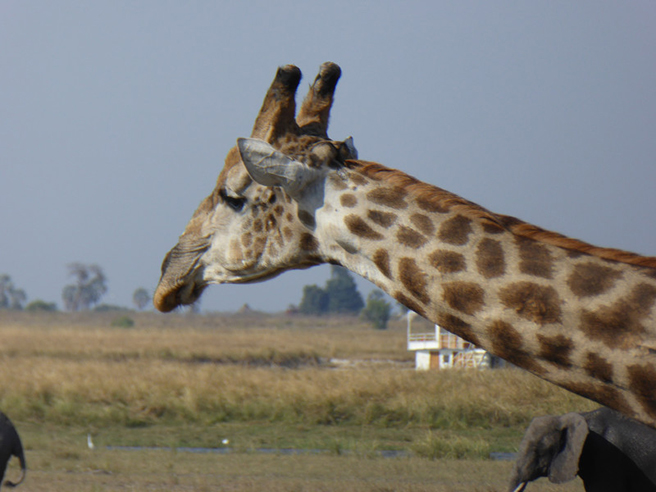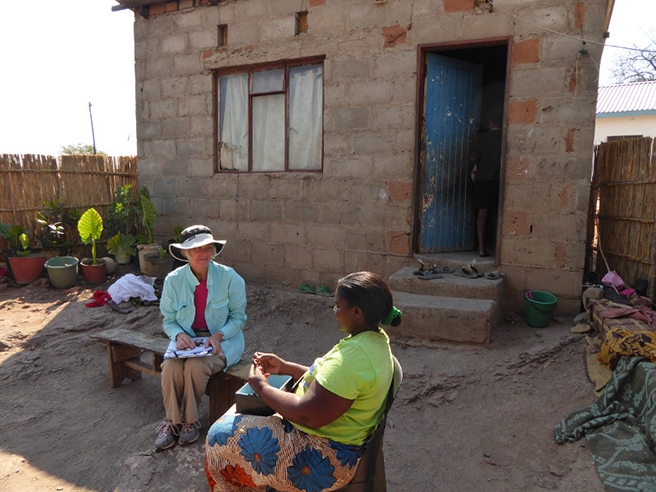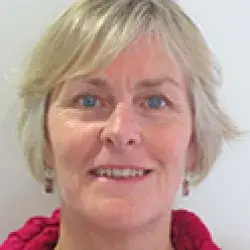The Economic Impacts of Safari Lodges

I am investigating the social and economic impacts of Ngoma Safari Lodge—one of AWF’s Conservation Lodges located adjacent to Chobe National Park in Botswana on local communities.
The lodge was set up with the assistance of AWF who helped negotiate the agreement between the private investors and the Chobe Enclave Conservation Trust (CECT). As part of the agreement the CECT gets annual income that is used for community projects within the five Enclave villages. The lodge opened about 3 years ago. AWF is keen to know what the social and economic impacts of the lodge both positive and negative is having on the five villages and whether tourism is providing any benefits to the community and offering an alternative livelihood option to local people.
There is a lot more to research than just doing surveys
People often imagine that doing research is a simple process as they often just see the surveys in the mail or see the final report of the project, however there is a lot of planning and preparation that goes into developing and implementing a research project.
I reflected on this as I drove through Chobe National Park the other day to Ngoma Safari Lodge. The first step in any research project is to read the literature on the topic of your proposed research and then develop a set of research questions or hypotheses that you want to answer. The next step is the work out which method would be the best to help answer your research questions – such as a questionnaire survey, a mail survey, interviews, focus groups or another method. In my case I decided that it would be best to use a face-to-face questionnaire survey as I was interested in speaking to the lodge staff and the local community. One of the reasons I chose this method was because the AWF wants to do similar research in the future on other tourism and non-tourism enterprises to determine their impacts so this was an opportunity to trial a method that could be easily implemented in the future by others. I was fortunate that another researcher had done similar work in other African countries so I was able to adapt that questionnaire survey to meet the needs of the AWF project. Once you have worked out whom you want to survey then you need to develop the questions for the survey. This stage is followed by a rigorous human ethics process, which involves sending the surveys, information statement and consent form (for the research participants) to the University Human Ethics Research Committee who assess it and grant you permission to conduct the study. In my case the Charles Sturt University Human Ethics Committee approved this project.
Depending on where you are doing your research you may need other approvals and in my case AWF also had to get a research permit from the Botswana government to carry out the research.
First things first
On arriving in Kasane the first thing I had to do was to to introduce myself and explain the project to relevant key organisations and individuals on the ground. In my case the lodge managers, Chobe Enclave Conservation Trust and Botswana Tourism. Through these meetings is became clear that I would need a translator as many people in the villages do not speak English and as I found out some do not speak the national language Setswana but a local language Subiya. I was very fortunate to find an excellent translator Georginha who has been a wonderful asset to the project. There was also a lot of discussion and debate about whether my Polo rental car could reach the furthest villages.
The first few days in Kasane were spent in meetings, finding a translator, settling into my self-catering accommodation, orienting myself to the town and Chobe National Park and photocopying 80 surveys, information statements, consent forms and translator confidentiality forms. All these documents are needed for each person who agrees to participate in the survey.
Lodge staff
Armed with all my surveys I drove out the Ngoma Safari Lodge to start my surveys with the staff who live in the Enclave villages – the lodge managers Babs and John were very welcoming and helpful as were all the staff. The first day there I did eight surveys and then the following day another five surveys – this number represents the majority of the local staff. On the way to the lodge I saw an amazing sight – a pack of six African Wild Dogs – some of the younger dogs came right up to the car and were very inquisitive. There are estimated to be only 4,000 left in Africa so I felt extremely privileged to see them at such close quarters.

Community surveys
Last week Georginah and I started the community surveys. This involved driving through Chobe National Park and onto the villages in the Enclave – a distance of about 85 kilometres and an hour’s drive as the speed limit in the park is only 80km per hour (because of the animals!). Before we start our work we first have to introduce ourselves and explain what we are doing to the Chief of the village who works in the Kgotla (tribal administrative centre). This usually involves a short introductory meeting where I present my research permit and business card and explain the project. All of the chiefs have been very friendly and all have agreed that we can do the surveys in their village. One Chief even wanted to be the first in his village to do the survey!
Knowing about and following these local protocols is a very important aspect of doing any research especially in a different country and culture, as is the correct and respectful way of approaching a house in the village and greeting people. The first villages we surveyed were Muchenje and Mabele. Over the next few days we did 10 surveys – as I need 10 surveys from each village to do statistical tests when I analyse the data. All the people in the villages have been very friendly and all those we approached agreed to answer the survey. We generally we stop at 1pm for lunch at the local (and only store) where we pick up a cold drink and eat peanuts and fresh fruit. Most of the surveys have been conducted in Subiya the local language as this is the most commonly spoken language in this area and most people are more comfortable answering the questions using this language – Georginah’s role as translator and assistant has been vital as not only a translator but as an excellent communicator and listener.
We always have to leave the villages before it gets dark as the Park closes at 6.30pm as it’s very dangerous to drive through the park in the dark. Even during the day you have to keep your eyes peeled all the time for animals crossing the road – the other day we say a hyeana which was really exciting – my first sighting. We commonly see herds of elephants crossing the road - so it’s give way to them – they are large animals! A male elephant can weigh up to 6 tonnes and be 4 metres high.
Next week on to Satau and Parakarungu
Next week Georginanh and I are off the Satau and Parakarungu villages that are far beyond the Chobe National Park but are part of the Chobe Enclave of villages. We will be doing a total of 20 surveys in the two villages. As it’s so far Georginah’s mother has kindly offered to let us stay at her house for a few days to save me from driving back and forth from Kasane. I’m looking forward to spending time in Parakarungu village and experiencing village life and meeting the local people. More next week.
